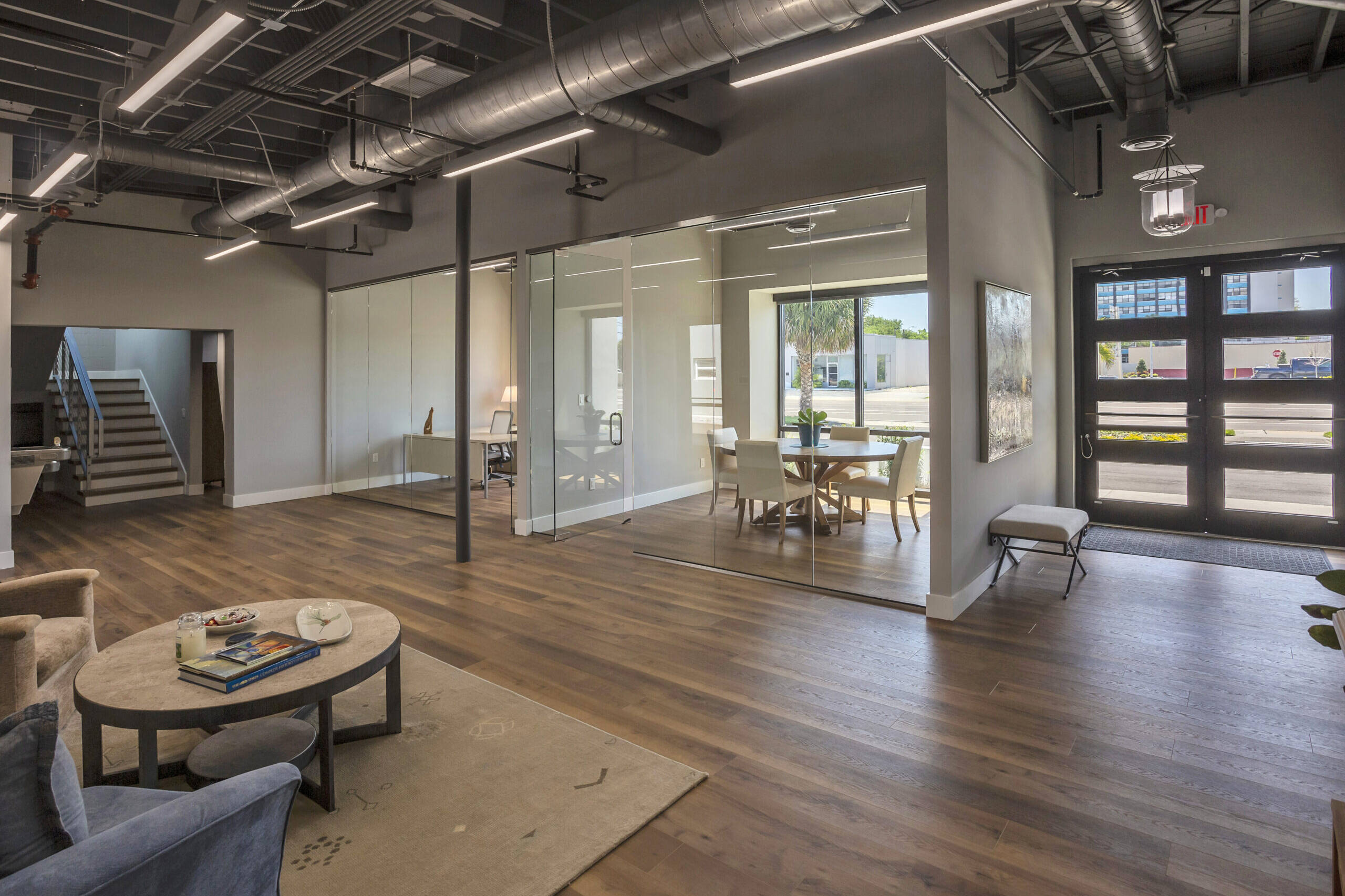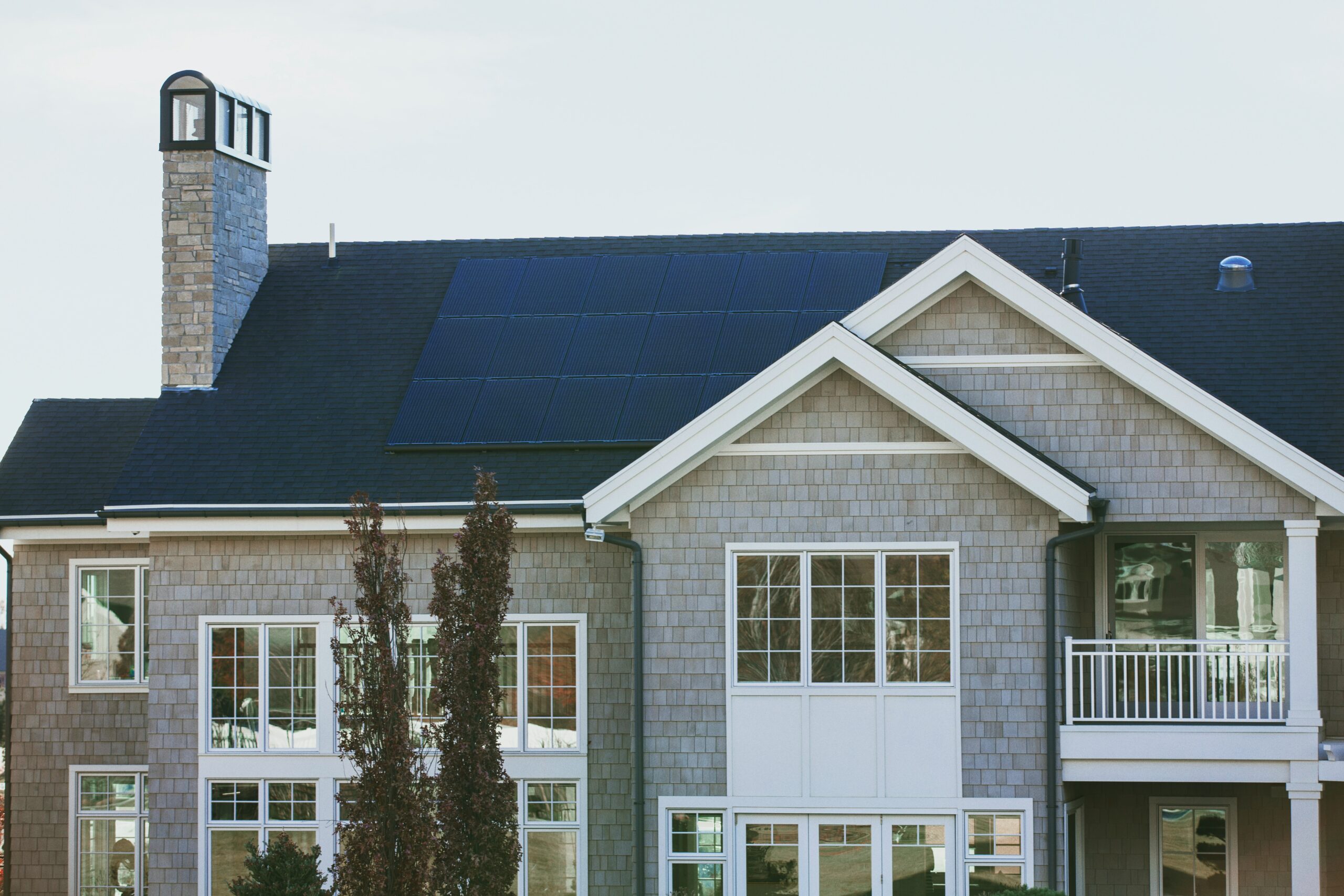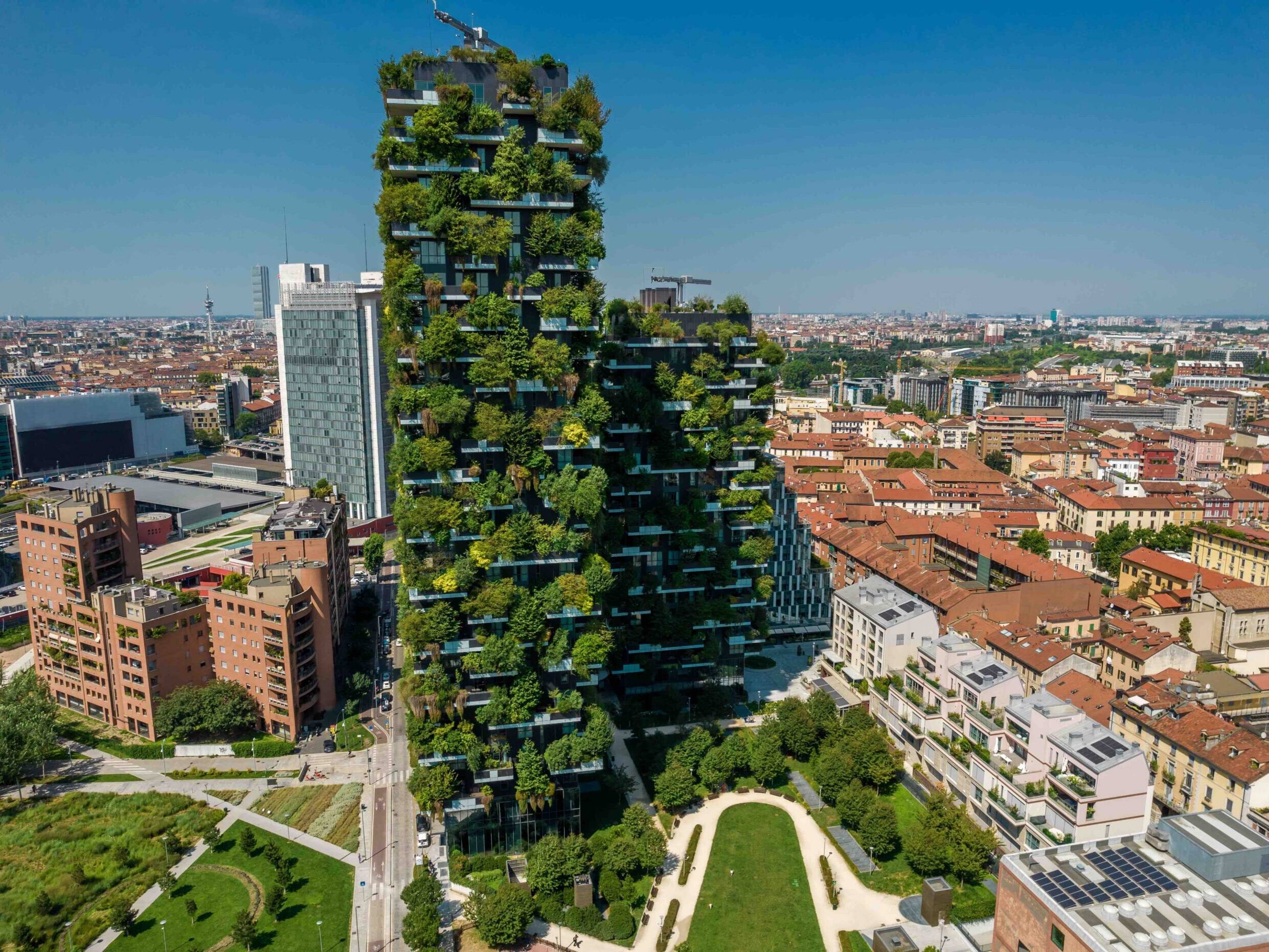A Journey Through the Getty Center: Discovering the Green Design and Architectural Innovations in Los Angeles
I had the opportunity this week to visit the Getty Center in Los Angeles, a beautiful architectural marvel nestled in the hills, which harmoniously blends sustainable design principles with aesthetic beauty and functionality. As I explored the grounds on an architectural walking tour, I gained firsthand knowledge of the remarkable features that have earned this center its LEED certification from the U.S. Green Building Council.
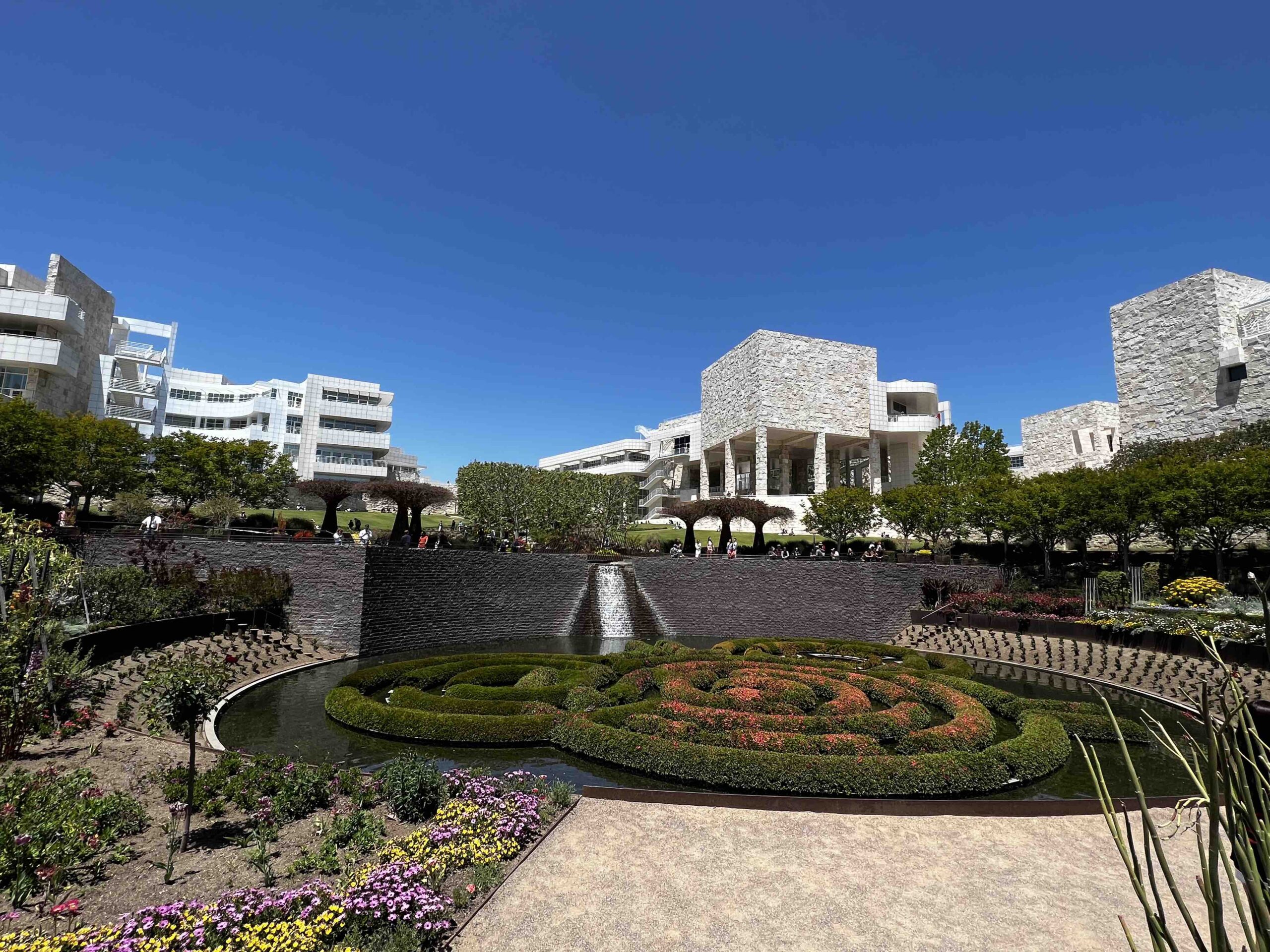
The Getty Trust owns the Getty Center, and the benefactor was J. Paul Getty. When shopping for land, the Trust acquired 100 acres; 600 acres became available later. Today, the buildings and gardens occupy over 30 acres of this land, which is both a cultural and ecological haven.
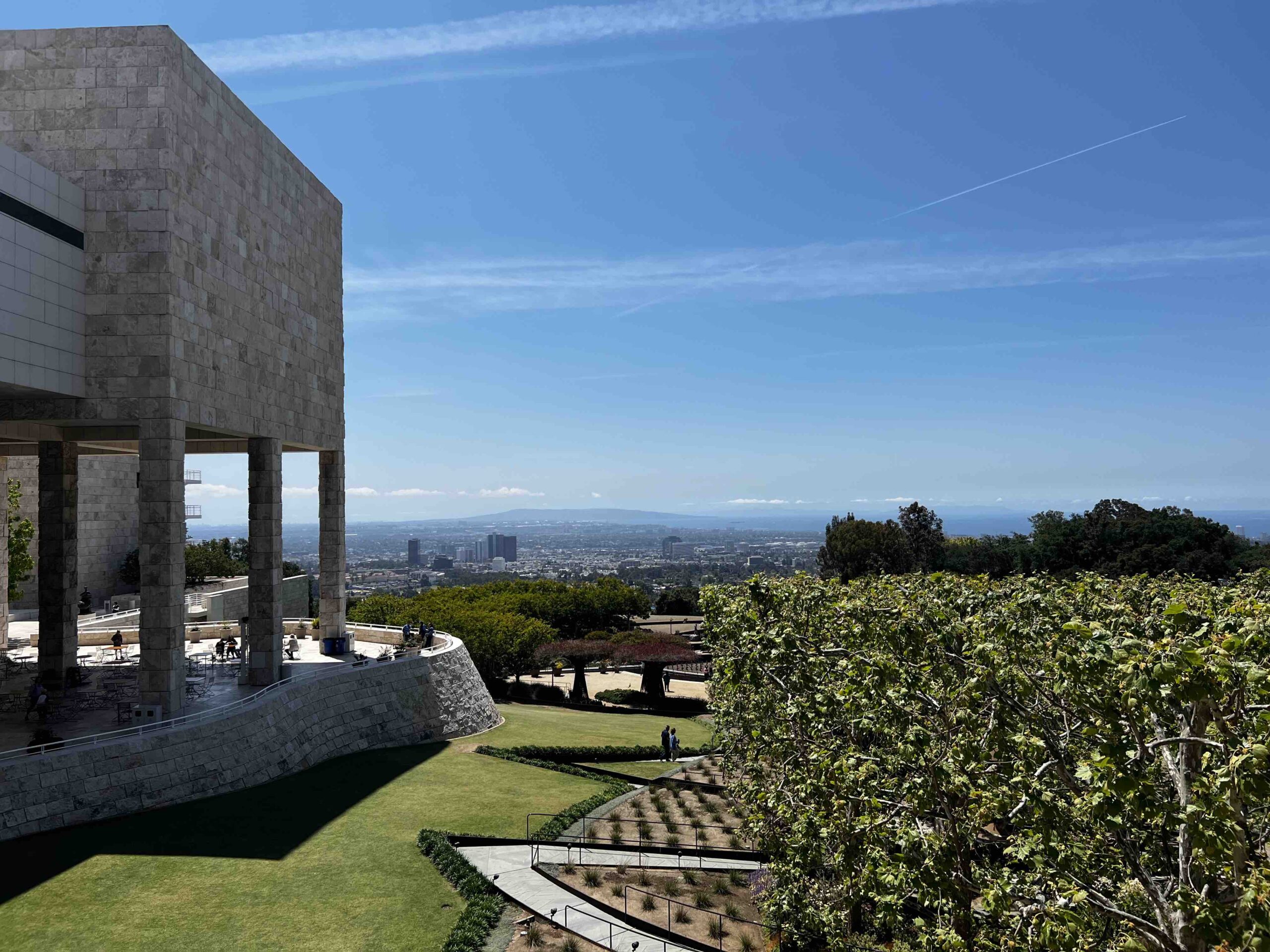
Over a thousand people worked on the site daily during the construction of the Getty Center under the guidance of renowned architect Richard Meier. His design for the center follows a natural V shape, allowing it to flow with the mountains and preserve the existing landscape. One unique aspect of the construction was that no soil could leave the premises; it could only be rearranged, effectively mitigating sediment discharge.
Here are some of the innovative sustainability features and architectural highlights that make the Getty Center a model for environmentally conscious design:
Site Selection and Planning: The Getty Center’s hilltop location preserves the natural landscape and minimizes disturbance to local ecosystems. The design incorporates extensive landscaping with native and drought-tolerant plants, reducing the need for irrigation and conserving water.
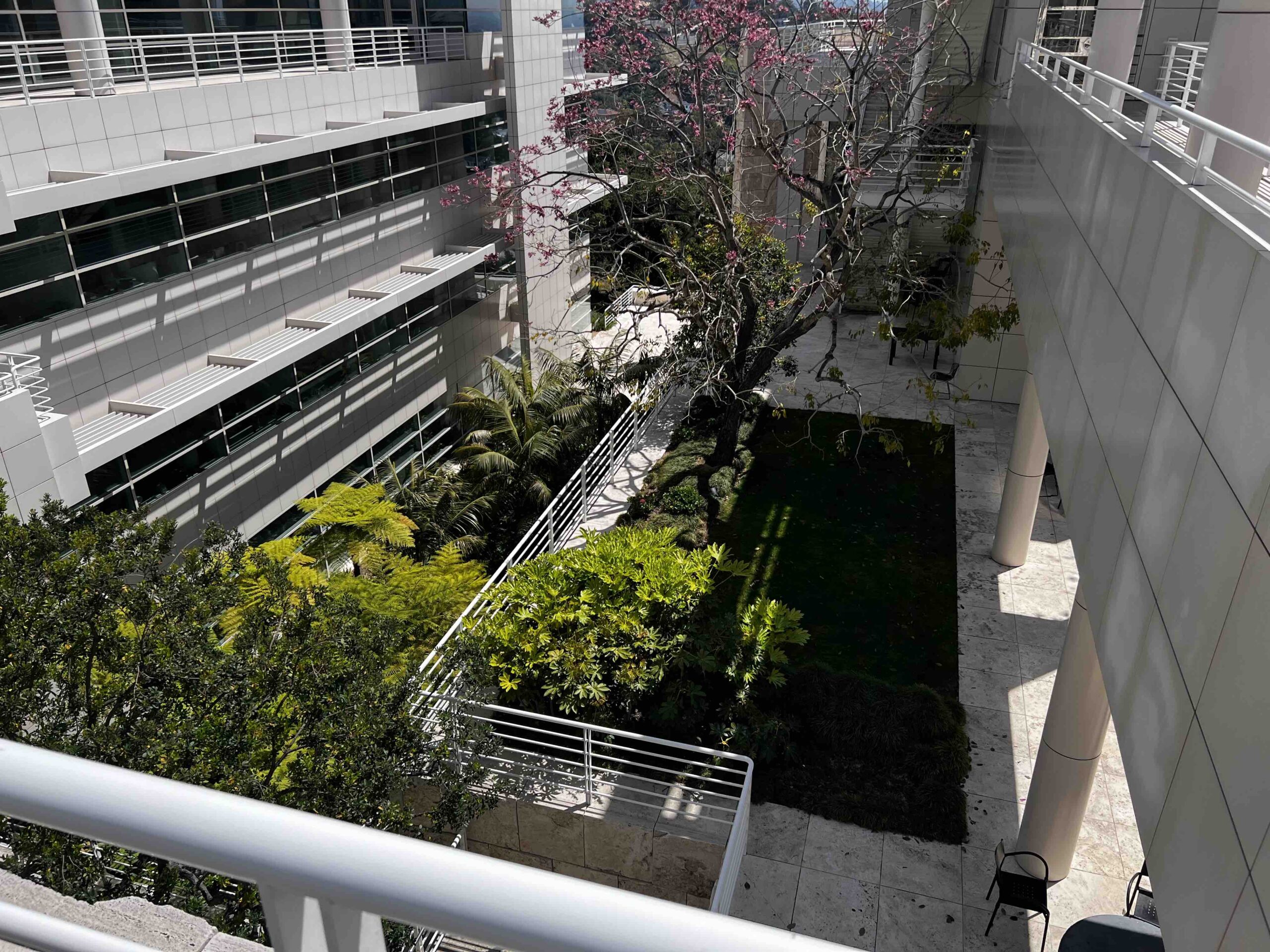
Energy Efficiency: The Center uses a sophisticated energy management system to optimize heating, cooling, and lighting based on occupancy and ambient conditions. High-performance glazing, daylighting strategies, and efficient lighting controls help minimize energy consumption while maintaining a comfortable and well-lit environment for visitors.
Water Conservation: The Center installed low-flow fixtures, waterless urinals, and efficient irrigation systems to reduce water usage. The architect was so particular about the design and flow of the building that there were no drain grates installed between beautiful Italian travertine pavers. If you look closely, the areas not grouted in the paver floor are the drains, which run the water to a million-gallon underground cistern that collects rainwater and runoff for landscape irrigation.
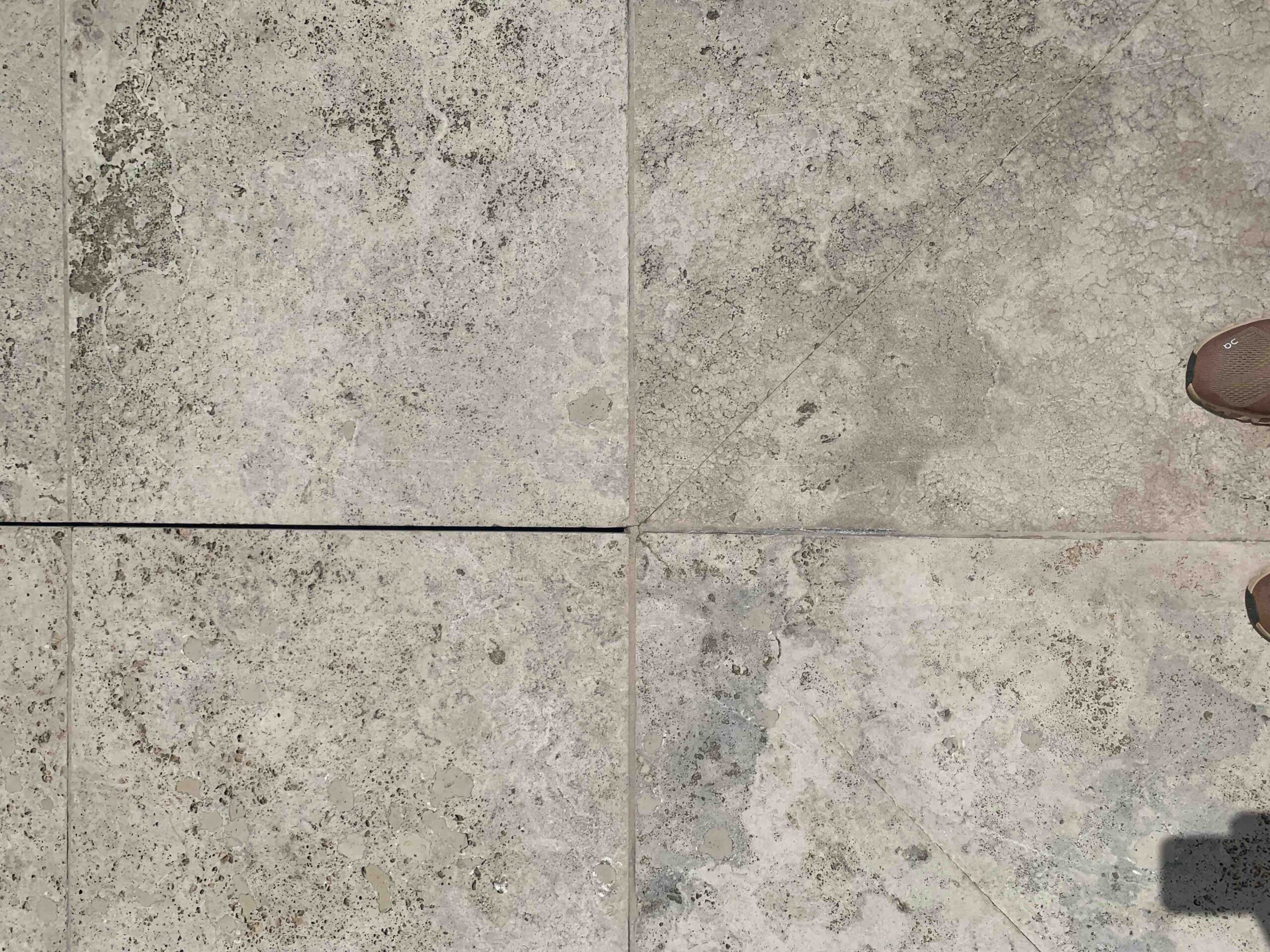
Building Materials: The construction incorporates locally sourced and recycled materials, reducing the environmental impact of transportation and waste. Light-colored travertine and white enameled aluminum panels for the exterior cladding reflect sunlight, minimizing heat gain and reducing the need for air conditioning.
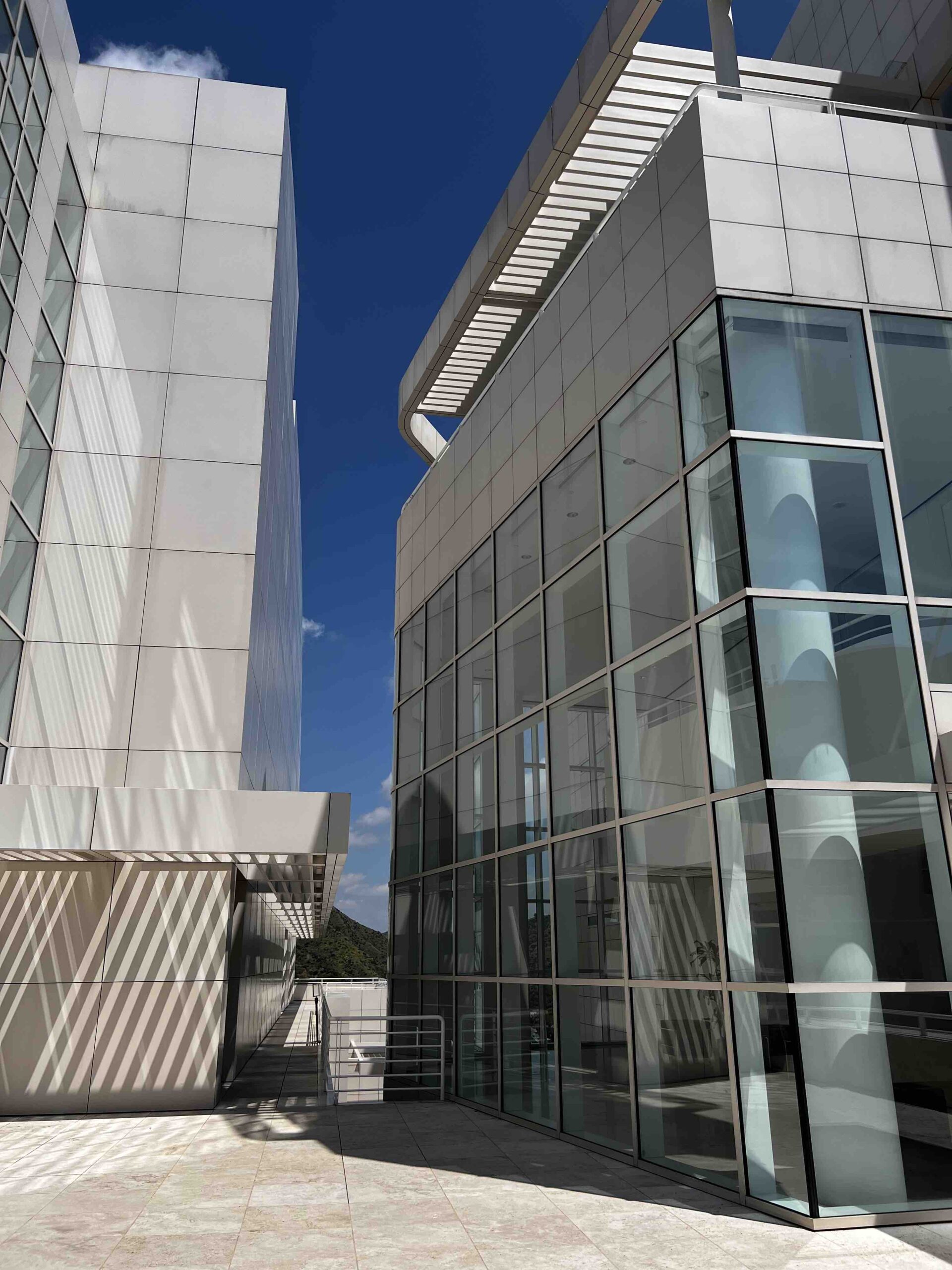
Indoor Environmental Quality: The Center prioritizes indoor air quality and occupant comfort using low-VOC (volatile organic compound) materials, efficient ventilation systems, and abundant natural light. By carefully controlling humidity and temperature levels, the Getty Center creates a pleasant atmosphere for visitors and protects its valuable art collections.
Waste Management: The Getty Center recycles all general waste and employs comprehensive recycling and waste management programs to minimize waste generation and divert materials from landfills.
Sustainable Procurement: The Center’s policy is to use recycled paper products as far as reasonably possible.
Low Carbon Menu: The Cafe, Restaurant, and Coffee carts offer “low carbon” menu items to minimize greenhouse gas emissions.
Employee Training: Maintenance personnel receives annual training on minimizing emissions and using improved techniques.
Transportation: The Center promotes sustainable transportation options with a carpool/vanpool policy, tram service, bicycle racks, and electric vehicle charging stations.
Education and Outreach: The Getty Center raises awareness about sustainability and environmentally responsible practices through daily architecture and garden tours, engaging with visitors, staff, and the broader community.
Vegetation Management: The Getty Center has previously used goats for grazing on the mountain surrounding the premises, reducing the risk of fire and providing a greener alternative to machines for trimming undergrowth. This practice is under review for potential reinstatement.
The Getty Center’s commitment to sustainability and innovative architectural design exemplifies how cultural institutions can incorporate green design principles into their operations. The center preserves its valuable art collections by integrating environmentally conscious features and adopting comprehensive sustainability initiatives. It serves as a model for other institutions, showcasing the potential for harmonizing sustainable design with aesthetic beauty and functionality.
Together, let’s contribute to a more sustainable future.
Greg Totten
CGC 1529916 · LEED AP BD+C
O: (727)-386-9480
Share
Related Posts
February 21, 2024
Shaping the Future with Retrofitting Innovations
Chapter 6: Shaping the Future with Retrofitting Innovations
February 11, 2024
Navigating the Challenges of Retrofitting: From Planning to Execution
Chapter 5: Navigating the Challenges of Retrofitting: From Planning to…


